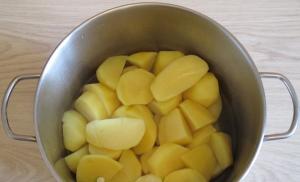An underwater stalactite freezes everything it touches. Finger of Death in Antarctica
This could only be imagined in a horror film... but, no, nature itself created it.
Amazing and mysterious processes sometimes occur at the bottom of the seas, one of them is the formation of ice “stalactites”, scientists call them “brinicles” (“icicle from ocean water” translated from English), and those who saw this phenomenon with their own eyes, They called it the “icy finger of death.”
The “icy finger of death” can be observed in the polar winter; it probably appears due to temperature changes: the air temperature drops below -18 degrees. C, and the water temperature remains relatively high - about -2 degrees. WITH.
The process goes like this: sea water rises to the top, is cooled by icy air and rushes down in streams, simultaneously cooling and freezing more warm water. The water of this jet has a much higher density than all the other ocean water surrounding it, and besides, the temperature of this jet is much lower, it colder than ice, literally speaking. Scientists cannot explain how this is possible. No one had encountered such a phenomenon before and no one even knew about the possibility of such a presence!
The rate of formation of brinicles is about 30 cm per hour. Often, having reached the bottom, the “ice stalactite” continues to grow, which ends quite disastrously for the inhabitants of the seabed. All oceanic animals ( sea stars and other ocean organisms) time after time fall into this icy trap. This phenomenon has been known since the 70s of the twentieth century, but only three years ago it was possible to make a video.

Oceanographer Silje Martin was the first to describe this phenomenon in detail in 1974 ( Seelye Martin). Now, a group of researchers from Spain has published a study on the composition and structure of brinicles, proposing a model for the mechanism of their formation. When salty ocean water freezes, it releases salt to form fresh ice. This excess salt saturates the water remaining on the surface of the ice and in cavities in the ice column.
The result is ice reservoirs containing a high-density, hypersaline solution with a very low freezing point: as salinity increases, this temperature decreases. If the ice cracks, this dense, heavy and extremely cold liquid begins to sink to the bottom in the form of such a deadly stream, freezing all living things in its path. This mass death of starfish caught in the path of the brinicle greatly impressed the BBC film crew, who captured this phenomenon on video for the first time in history.
Filmed by underwater cameramen Hugh Miller and Doug Anderson, the brinicle reached the bottom in three and a half hours. This is the first video that gives a complete picture of the amazing natural phenomenon that occurs in the cold waters of the world's oceans.
Near the volcanic island of Ross, where BBC underwater cameras were identified, operators were able to find and film 4 ice stalactites, which are created at a very high speed and truly make the blood freeze in the veins of those who observe this phenomenon.
Biologists led by Bruno Estebano argue that life on Earth could well have originated in the polar seas in “icicles of death” (underwater structures).
“Icicles of Death” are underwater stalactites. They received this name due to the fact that, forming on the bottom in places where impurities enter the water (these icicles are the center of crystallization), on their way they kill starfish and sea urchins.

Research by biologists has shown that the ice in the “icicles of death” is much more porous than in ice floes, and it carries salts to the surface of the sea.
Scientists do not rule out that these same icicles in the past could have represented something like a “chemical garden” (organic molecules grew in it), and been the center of the formation of life. Brinicles could also play the role of hydrothermal vents used in classical theories of the origin of life.
Chemistry students are familiar with a popular visual experiment called a “colloidal garden,” in which salts of certain metals are added to a concentrated salt solution and a solid precipitate forms, forming slender branching structures that look like alien plants. Such “gardens” grow in natural conditions, including at hydrothermal springs - the famous black smokers, where jets of hot water, supersaturated with minerals, burst out from under the ocean floor under enormous pressure. Scientists believe that the deadly Brainicles have much in common with these “gardens,” despite the fact that the “gardens” of black smokers grow from the bottom up, and the Brainicles grow from the top down.
Moreover, both phenomena are considered key to the first stages of chemical evolution that preceded the emergence of biological life on Earth. Black smokers in last years often appear in modern theories of the origin of life. Who knows, maybe brinicles could fit into this model - for example, with the emergence of special forms of life on planets covered in ice?


Our planet keeps many unusual secrets. Among them, Brynicle is an amazing process of formation of a specific form of sea ice, about which not much is known yet.
The “Icy Finger of Death” is a stream of freezing water that, having reached the bottom, freezes all living things in its path.
It was first recorded back in 1962. The process of the formation of underwater stalactite was described by oceanographer Silje Martin.
But real confirmation and opportunity to observe this unusual phenomenon scientists received only in 2011, when in arctic waters BBC cameramen Hugues Miller and Doug Anderson filmed it using time-lapse cameras.
Brynicle (from English from brine - brine and icicle - icicle; ice stalactite) is the formation of a form of sea ice when slightly salted (3–5%) icy water meets an ocean layer oversaturated with salts. As a result, underwater icicles form.
Externally, the brinicle is an ice tube growing from a layer of ice on the surface of the water towards the bottom.
Inside - icy and very salty water, which Brainicle pulls out of sea ice, located above it.
When nucleated, the “finger of death” is very fragile and the walls are thin, but thanks to the constant flow of cold brine, it increases its strength.
Ice has an unusual porous structure.
At favorable conditions this stalactite reaches the bottom and continues to grow along the underwater slopes, like an icy stream.
It stops only after reaching the lowest point of the shelf.
Video: how the “icy finger of death” is formed
The emergence of Brynicle was filmed near Little Razorback Island. This is the first video that gives us the opportunity to see amazing a natural phenomenon, arising in the cold waters of the world's oceans.
Scientists suggest that in the distant past these same icicles could have represented something like a “chemical garden” - a center for the formation of life, in which organic molecules were formed.
This unique phenomenon, but far from the only thing - nature is preparing many more discoveries for us in the world low temperatures, and high.
Brynicle or ice stalactite, the word comes from the English brine icicle, translated as sea icicle.
This is an amazing, but by no means rare, natural phenomenon that originates in the subglacial waters of the World Ocean.

The first scattered evidence of the existence of ice stalactites, dating back to 1962, was confirmed by the work of oceanographer Seelye Martin, who in 1974 described a generally accepted model of their formation.

For more than 30 years, only scientists could observe this brightest oceanic display, until in 2011 the process of formation of sea icicles was filmed.
The BBC film crew managed to do this. Their cameras installed underwater recorded the birth of a huge icicle, which is called an ice stalactite or brynicle. The formation of this natural phenomenon is easily explained by science.

Salty seawater freezes completely differently than fresh water. It does not turn into a solid dense block of ice, but more like a wet foam sponge. Therefore, ice icebergs in the Arctic are riddled with numerous small channels containing saline solution. The air temperature on the surface can be down to -20 degrees, and the water temperature never drops below -2 degrees.
Obeying the laws of physics, heat from the water rises and melts the iceberg, forming new ice. The salt from this ice is concentrated into a brine solution, squeezed out through small channels and into the ocean. The density of the resulting solution is much higher, and the temperature is lower than the density and temperature of the surrounding water. It rushes to the ocean floor in a continuous stream, freezing the sea water around it. As a result, in just a few hours, the flow saline solution envelops a thin ice pipe, forming something similar to a stalactite.


Unlike an ordinary icicle, an ice stalactite does not “stop” in the water, but continues to grow towards the bottom. Having reached it, it spreads further, forming peculiar networks that freeze all living things in its path. Of course they don't hit them large fish and mammals, but for small animals of the ocean floor the ice stalactite is a dangerous natural phenomenon. For example, small starfish and urchins swimming past it are instantly covered in an ice crust and will never be able to get out.

In front of the members of the film crew, the “icicle of death” grew to the very bottom in 3 hours and literally destroyed everyone in 15 minutes sea creatures within a radius of 3.5 meters.

Because of this killing power, the BBC camera team led by Hugh Miller dubbed Brynicle the "icy finger of death." The filming took place off the coast of Ross Island and, as Mr. Miller said in his interview, they had to work hard so that viewers could then watch this unusual natural phenomenon on video.

Mr. Miller said in an interview that the sea icicle literally grew before his eyes. “It was just an incredible sight! said Hugh Miller. — Downward flows of salt water from the surface froze the sea water, thereby forming a bizarre-looking icicle, which in a few hours reached the bottom and dissolved an ice network that became a death trap for all living beings within a radius of 3.5 meters. I was simply amazed when I saw the formation of an underwater ice stalactite with my own eyes and only then realized why many oceanographers call it a local ice age.”



Cinematographers Hugh Miller and Doug Anderson filmed during their presence in Antarctica amazing phenomenon- "". Above the surface of the ice in a shallow place, cameramen using the “time lens” method filmed for 12 hours the process of formation of ice stalactites, which reach the ocean floor in the form of a stream of extremely cold (below zero Celsius) and very salty water.
Ice finger of death video:
Scientists called this phenomenon, and the operators who observed it called it “the icy finger of death.”
The water of this jet has a much higher density than all the other ocean water surrounding it, and besides, the temperature of this jet is much lower than zero! 
Ice Finger of Death or Brynicle
This " Icy Finger of Death"kills everything living it touches, turning everything into ice. This can be clearly seen in the extraordinary video provided by the BBC. This chilling stream of salt water, reaching the bottom, spreads and freezes everything in its path. All ocean animals (starfish and other ocean organisms) caught in this ice trap freeze and die.

The icy finger of death - an explanation of the phenomenon
One of the most curious phenomena that can be observed in winter under Antarctic ice– formation of ice stalactites. These hollow tubes of ice grow from the icy surface like icicles. But, despite some visual similarities, the formation mechanisms of ice stalactites and ordinary ice icicles are significantly different. For a long time this process remained poorly understood, mainly due to the difficulties of observing ice stalactites. Only in 2011, the process of forming one of them was filmed by a BBC film crew.

The process begins under the ice, where salty seawater freezes and salt that has no place in the ice's crystalline structure is released, further increasing the salinity of the water trapped in its voids—and lowering its freezing point.

If the ice cracks, this concentrated solution will flow down, since its density is higher than that of the surrounding sea water. And since its temperature can be below the freezing point of water, an ice “pipe” forms around it.

Near the volcanic Ross Island, where BBC underwater cameras were installed, operators were able to find and film 4 ice stalactites, which are created at a very high speed and really make the blood freeze in the veins of those who observe this phenomenon.
You can also see other wonders in Antarctica, for example,













